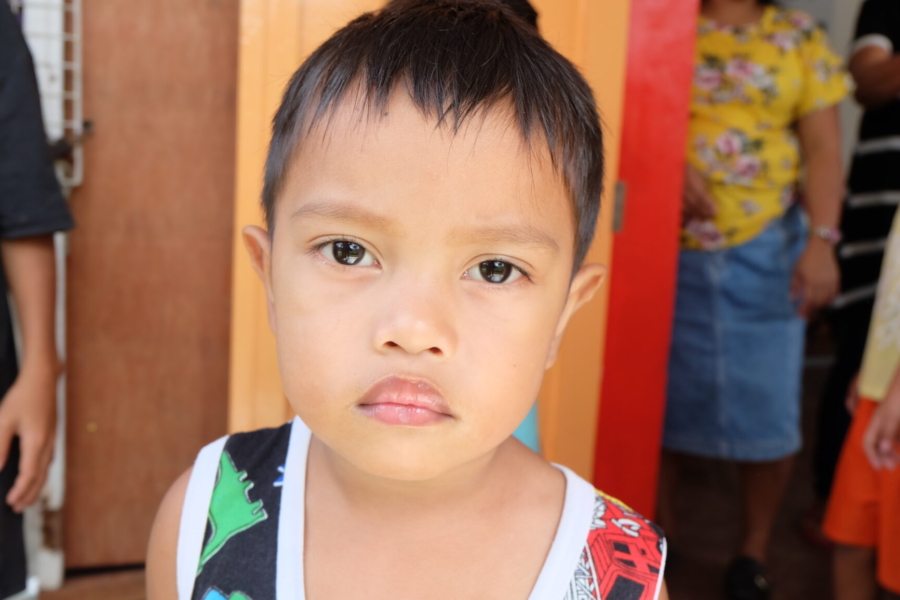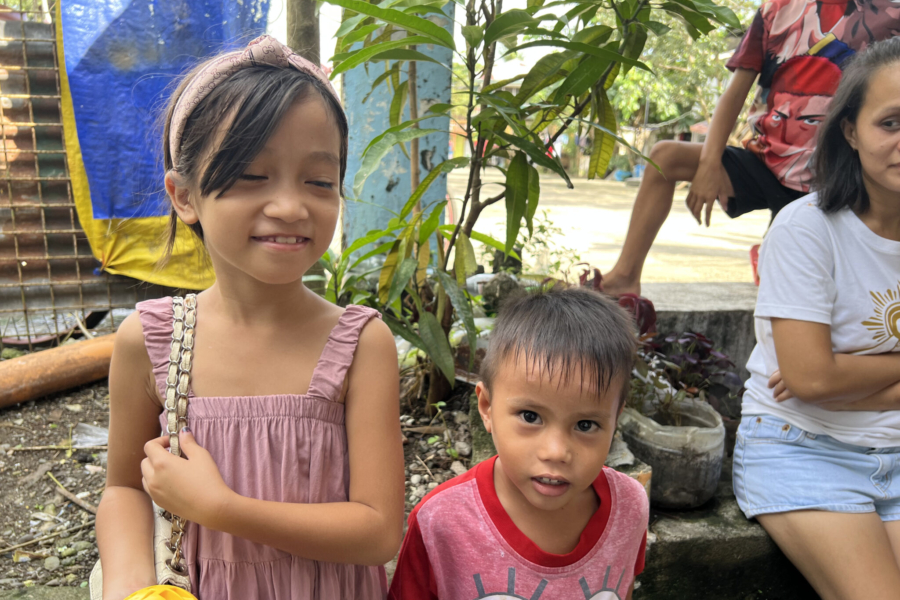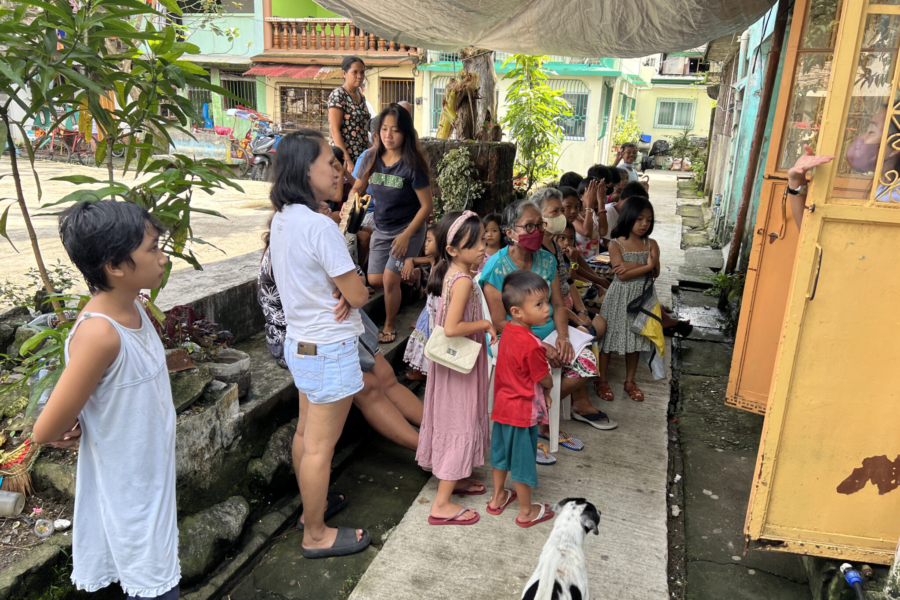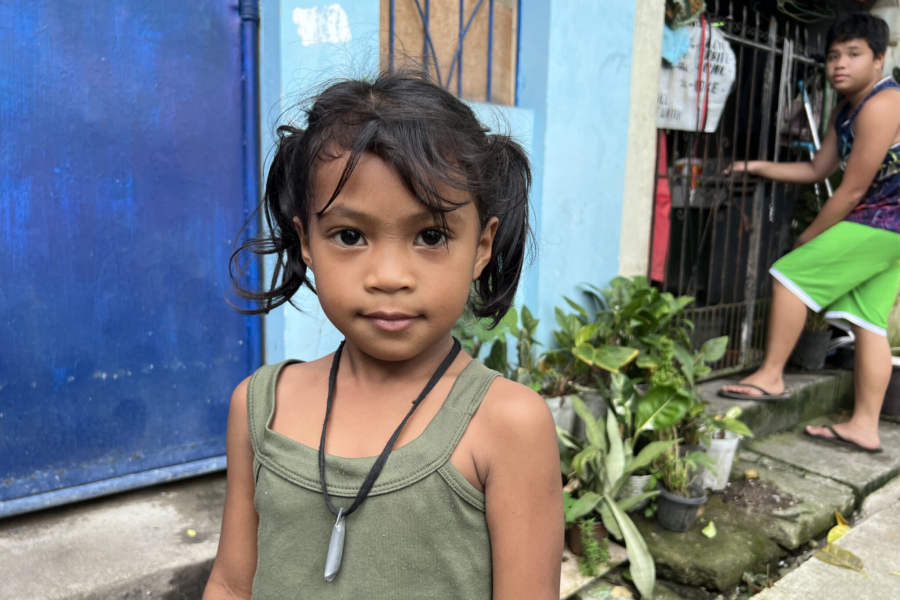Since I had arrived in Tacloban to visit our affiliated sites in early January, I had heard so much from our volunteer coordinator, WimWim, about Typhoon Yolanda and how it had devastated the city ten years earlier. WimWim explained that although very tragic, the entire community and the government of Tacloban learned a valuable lesson in the aftermath about emergency preparedness and the importance of having a plan in place in case a storm of such magnitude occurred again.
As WimWim, Ester, and I drove from the Volunteer for the Visayans office to the Santo Nino Center on the morning of the third day of my visit, WimWim told me about how the Santo Nino Center and the Cancumbang Center, two of the three affiliations Children Incorporated has in Tacloban, both serve as evacuation centers for the neighborhood, where residents can gather and safely wait for further instructions about how they should cautiously proceed through harsh weather — or if nothing else, stay dry when the water starts to get high.
I found myself very grateful to know that they had a place such as the Santo Nino Center to meet their daily basic needs, but also help them if an emergency were to arise.
The Santo Nino Center is roughly a 45-minute drive from the VFV office, and located in a quaint neighborhood on the outskirts of town. Although not what I would consider very rural, compared to the bustling city center where the Visayans Center at Bliss is, the Santo Nino neighborhood was very serene, where most people walked or rode on small motorbikes, and animals freely roamed the streets, not needing to be concerned for heavy traffic.
When we arrived at the Santo Nino Center, before we went inside, we walked across the street and proceeded down a narrow walkway down about 50 yards to a row of houses. Ester explained that a few of our sponsored children lived in these houses, and the support they received from Children Incorporated was especially important because most of them lived with either a single parent or only had one parent who was working, as farming or service jobs in the area paid very little or were mostly seasonal.

Sponsored children walk with their mother to the Santo Nino Center for the monthly distribution of basic needs items they receive.
I could now see exactly why the Santo Nino Center was crucial as an evacuation location for this area — the houses were little and built below the road, and even on a dry day like today, there were pools of water collecting on the ground, with little drainage and little direct sunlight due to the heavy foliage that surrounded us.
We then made our way back up the small hill to help prepare for the afternoon feeding program at the Santo Nino Center. Thanks to our sponsors, children receive four meals a week at the center, and monthly distributions of food, hygiene items and school supplies. Although a simple and small building, the center was perfect for not only the Children Incorporated programs that were facilitated there, but was more than sufficient for an evacuation site. The one room building had folding tables, a small kitchen, a storage area, a bathroom, a handwashing station and a water filtration system that all could help ensure families would stay safe as needed if they were waiting out a storm.
It was the kind of safe environment that all children and families deserve.
Once the VFV staff finished preparing a lunch of chicken, rice and stewed vegetables, the children started to arrive, each having a reusable container and drinking cup with them. The children were allowed to come eat anytime between 12 and 2 pm, depending on when they were done with school for the day. I loved the flexibility of the system in place — there was much-needed structure for when the center was open, but an understanding that the children might be on slightly different schedules.
As I watched the children enjoy their meal and chat with each other and the staff, I found myself very grateful to know that they had a place such as the Santo Nino Center to meet their daily basic needs, but also help them if an emergency were to arise. It was the kind of safe environment that all children and families deserve, and I was proud that Children Incorporated played such a huge part in all of it.
***
How do I sponsor a child in the Philippines?
You can sponsor a child in the Philippines in one of three ways: call our office at 1-800-538-5381 and speak with one of our staff members; email us at sponsorship@children-inc.org; or go online to our sponsorship portal, create an account, and search for a child in the Philippines that is available for sponsorship.

















